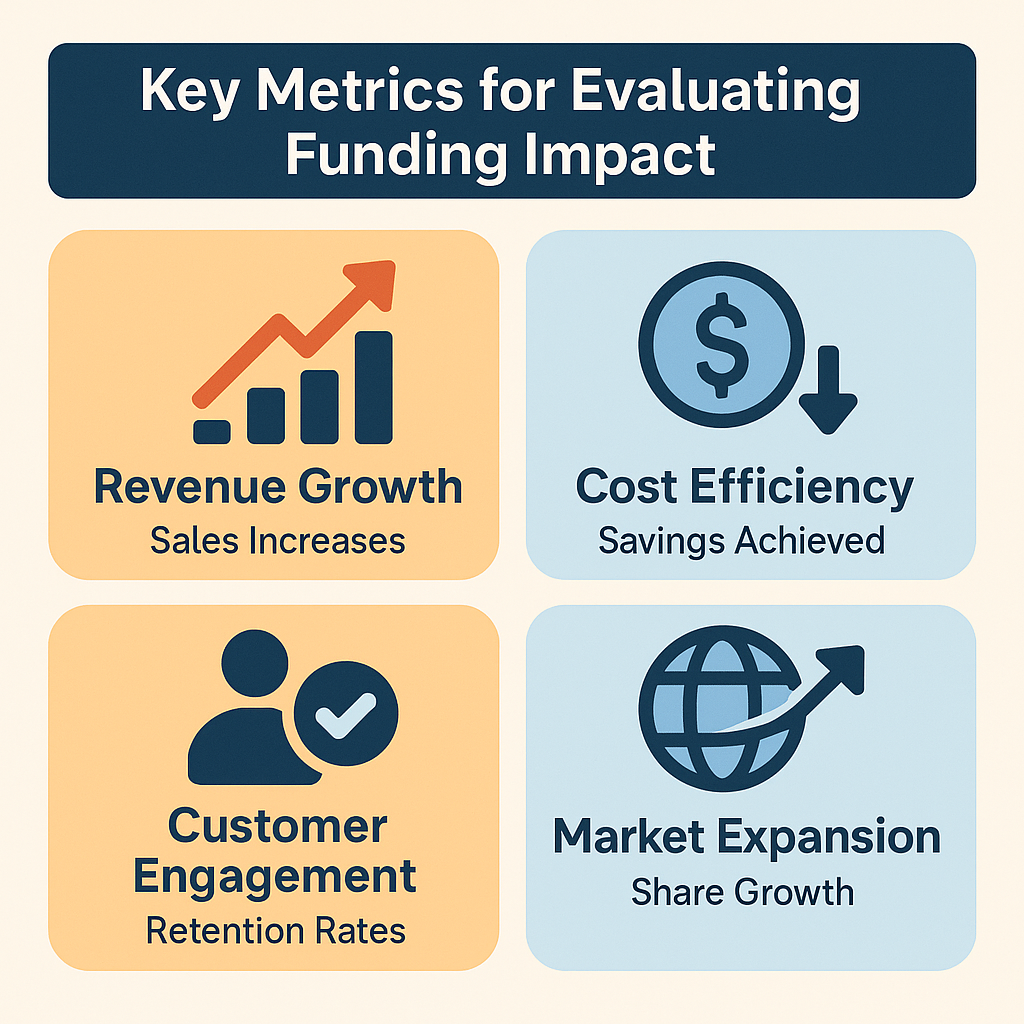How to Measure ROI of Your Business Funding
Understanding how to measure ROI of your business funding can make the difference between smart financial decisions and costly mistakes. When you secure financing for your business, whether through merchant cash advances or other funding options, tracking the actual return becomes crucial for long-term success.
Many business owners focus solely on getting approved for funding without establishing clear metrics to evaluate whether that financing actually drives growth. This approach might leave you wondering if your investment paid off or simply added unnecessary costs to your operations.
The key lies in developing systematic methods to track performance, analyze profitability, and make data-driven decisions about future funding needs. Let's explore the essential steps and strategies that can help you maximize the value of your business financing.
Setting Up Your ROI Measurement Framework
Creating a solid framework for measuring ROI requires establishing clear baseline metrics before you receive funding. This systematic approach helps you track meaningful changes in your business performance.
- Document your current financial position: Record monthly revenue, profit margins, and key operational expenses to establish your starting point for comparison.
- Define specific funding objectives: Identify exactly how you plan to use the financing, whether for inventory purchases, equipment upgrades, or marketing campaigns.
- Set measurable timeframes: Establish realistic periods for evaluation, typically ranging from 3 to 12 months depending on your funding purpose and business cycle.
- Choose relevant performance indicators: Select metrics that directly relate to your funding goals, such as sales growth, customer acquisition costs, or operational efficiency improvements.
This structured approach ensures you're measuring the right data points and can accurately attribute changes in performance to your business funding decisions. Without this foundation, you might struggle to determine whether improvements stem from the financing or other business factors.
Calculating Direct Revenue Impact
Understanding the direct revenue impact helps you see exactly how your funding translates into increased sales and business growth. This calculation forms the core of your ROI analysis.
- Track incremental revenue increases: Monitor monthly sales figures and identify revenue gains that occurred after implementing funded initiatives.
- Subtract the cost of funding: Include all fees, interest, and repayment amounts associated with your financing to get an accurate cost basis.
- Calculate percentage returns: Divide your net revenue gains by the total cost of funding, then multiply by 100 to get your ROI percentage.
- Account for timing differences: Consider that some investments may show delayed returns, so track performance over multiple periods for a complete picture.
The basic ROI formula helps merchants determine whether the cost of the advance is justified by the revenue it generates. Research suggests that accurately calculating ROI helps assess whether funding contributes positively to the financial growth of your business. This direct approach gives you concrete numbers to evaluate your funding decisions.
Analyzing Operational Efficiency Gains
Operational efficiency improvements often represent significant but less obvious returns on your funding investment. These gains can compound over time, creating lasting value for your business.
- Measure productivity improvements: Track changes in output per employee hour, processing times, or service delivery speed after implementing funded upgrades.
- Calculate cost savings: Document reductions in waste, lower error rates, or decreased manual labor requirements that result from your funded improvements.
- Evaluate capacity increases: Assess whether funding allowed you to serve more customers, handle larger orders, or expand service offerings without proportional cost increases.
- Monitor quality improvements: Track metrics like customer satisfaction scores, return rates, or rework requirements that may improve due to funded enhancements.
These efficiency gains might not immediately show up in revenue increases but can significantly impact your bottom line over time. Operational improvements often create competitive advantages that continue benefiting your business long after you've repaid the original funding.
Key Growth Tracking Metrics

Growth tracking involves monitoring several interconnected metrics that reveal the broader impact of your funding decisions on business expansion and market position.
- Customer acquisition and retention rates: Track how funding-driven marketing or service improvements affect your ability to attract new customers and keep existing ones engaged with your business.
- Market share expansion: Monitor whether funded initiatives help you capture a larger portion of your target market or enter new market segments successfully.
- Revenue diversification: Evaluate how funding enables you to develop new revenue streams, reducing dependence on single income sources and creating more stable cash flow.
- Competitive positioning improvements: Assess whether funded upgrades help you offer superior products or services compared to competitors in your market.
These growth indicators help you understand the strategic value of your funding beyond immediate financial returns. Sustainable growth often requires investments that pay dividends over extended periods, making these long-term metrics essential for comprehensive ROI evaluation.
Profitability Analysis Techniques
Profitability analysis goes deeper than revenue tracking to examine how funding affects your actual bottom-line performance and long-term financial health.
- Gross margin analysis: Compare gross profit percentages before and after implementing funded initiatives to determine if improvements in pricing, efficiency, or product mix occurred.
- Net profit tracking: Monitor changes in net profit margins while accounting for funding costs to see the true impact on your business's profitability.
- Cash flow improvements: Evaluate whether funding helps smooth cash flow cycles, reduce seasonal variations, or improve working capital management.
- Break-even analysis: Calculate how long it takes for funded improvements to generate enough additional profit to cover the cost of the financing completely.
Focusing on ROI over costs ensures that financing supports, rather than hinders, your business's financial health. This analysis helps you avoid the trap of pursuing growth at the expense of profitability, ensuring your funding decisions contribute to sustainable business success.
Successfully measuring the ROI of your business funding requires a systematic approach that tracks multiple dimensions of performance. From establishing baseline metrics to analyzing long-term profitability impacts, each step provides valuable insights into the effectiveness of your financing decisions.
The key to maximizing returns lies in choosing funding options that align with your specific business goals and monitoring their performance consistently. Knowledge of funding benefits and potential drawbacks allows more strategic financial decision-making that supports sustainable growth.
Remember that ROI measurement isn't a one-time activity but an ongoing process that helps you refine your approach to business financing. By implementing these measurement techniques, you'll be better equipped to make informed decisions about future funding needs and optimize the value you extract from every financing opportunity.

.png)






